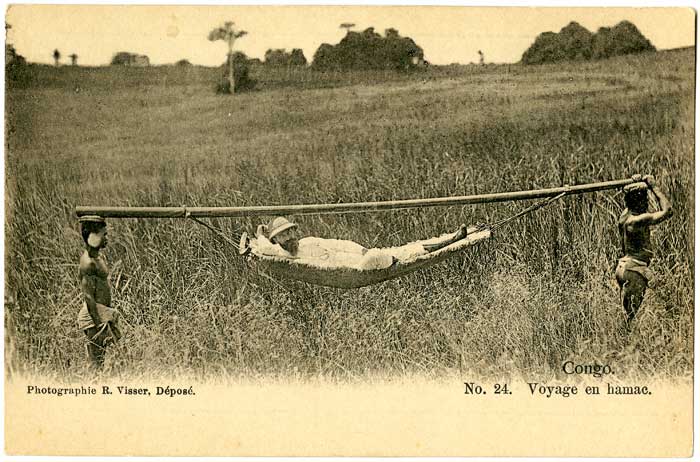

|

|

|
Click on image for a detail

Historic illustrations and postcards document the practice of carrying Kongo chiefs and others of high status-including Europeans-in cloth hammocks or wooden palanquins. These palanquin pins exhibit a lustrous patina that comes with age and handling. Each is ornamented with a motif found on Kongo emblems of authority. The carved head, probably that of a canine or a feline, with bared teeth is clutching a snake in its open jaws. Indeed, these are decorative, utilitarian objects and emblems of prestige, likely the property of a Kongo chief.
|
|
|
Historic illustrations and postcards document the practice of carrying Kongo chiefs and others of high status-including Europeans-in cloth hammocks or wooden palanquins. These palanquin pins exhibit a lustrous patina that comes with age and handling. Each is ornamented with a motif found on Kongo emblems of authority. The carved head, probably that of a canine or a feline, with bared teeth is clutching a snake in its open jaws. Indeed, these are decorative, utilitarian objects and emblems of prestige, likely the property of a Kongo chief.
|

The reclining hammock was generally used by foreigners while local dignitaries sat upright.
Image credits:
Kongo peoples, Mayombe region, Democratic Republic of the Congo
Mid- to late 19th century
Ivory
Length of largest 26 cm (10 1/4 in.)
National Museum of African Art, museum purchase,
2006-1-1.1, 2006-1-1.2
Different Methods of Traveling in Congo
Engraved for Middleton's Complete System of Geography
c. 1779, engraved book plate.
London
Eliot Elisofon Photographic Archives, National Museum of African Art
Robert Visser in a hammock
Congo Franšais. No. 24 - Voyage en hamac.
Photograph by Robert Visser
c.1900, postcard, collotype
EEPA postcard collection, CF 47-10
Eliot Elisofon Photographic Archives, National Museum of African Art
|
|

